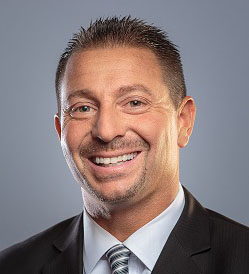
I am proud that Meriden was one of the first districts in Connecticut where students started school before Labor Day with K-8 in-person learning every day, a 9-12 collegiate hybrid model with in-person learning every other day, and a parental choice K-12 distance learning program. Connecticut’s Lt. Governor and the Commissioner of Education visited on opening day and shared that Meriden was “an exemplar for the state”. Now that we have been in school for over 40 days, I would like to share what is working for us – and how collaboration and our commitment to put students first has me optimistic as we look ahead.
Building a successful foundation
Our district has a diverse population of 8,500 students located in eight elementary, two middle, and two high schools. Student population includes 75% students of color and 77% of families eligible for free or reduced-price meals. We provide universal breakfast and lunch to all students. Applying an equity lens to all initiatives, we ensure all students have access to quality educational experiences and graduate college, career, and life ready. We have built a strong foundation with a 1:1 environment in which students are provided devices to access digital content and participate in anytime, anywhere learning, preparing them for the global world in which we live. Personalized pathways through blended learning have led to greater voice and choice and academic gains. Last March, when the state closed schools, our district transitioned seamlessly to distance learning with teachers and students comfortable with devices, digital content, and virtual meetings. While distance learning was progressing well, we knew that we did not want this to become our long-term solution.
Laying the groundwork to reopen schools
We established a Reopening School Committee, which included me, our central office team, and administrator and teacher union representatives. Using an online communication tool, the Committee surveyed parents over the summer for their choice of in-person or distance learning schooling. Administrators held virtual parent meetings, assuring families that schools were safe learning environments. In collaboration with the union, we surveyed teachers, engaging in open dialogues to allay fears. We had previously invited union representatives to join central office meetings on a monthly basis, thus establishing a culture of mutual respect and trust. Together, we were determined to reopen our school system.
What’s working in our schools
We reconfigured classrooms and encouraged teachers to use district-provided tents, maximizing outside learning areas. Signage was displayed to maintain social distancing, lunch waves and bus capacities were reduced, seating charts for classrooms and busses were developed and daily cleaning was increased by adding an additional four-hour custodian at each school. We required staff and students to wear masks, frequently hand wash, and use hand sanitizers often. We grouped students in class cohorts at the K-8 levels, and implemented a collegiate hybrid high school model to provide in-person learning every other day. Additionally, secondary students participate in sports and music programs. Food services provide healthy meals to students and “grab and go meals” for days when high school students are not in school. Our K-12 virtual learner families pick up weekly meals on Monday nights at school locations. Our district is able to remain open mainly because of our cohorts, union collaboration, Board of Education support, and close cooperation with the health department who helps monitor and contain cases without having to close down an entire school or our system.
Looking ahead
While we do not have a crystal ball to predict the future, every day that we can have in-person schooling is a day where teachers are getting to know their students better and building relationships with them, and students are engaged in learning and having opportunities to make friends. Looking ahead, we are committed to in-person schooling and implementing positive changes we learned from the pandemic. We will continue to recognize the efficiency of virtual meetings for parent-teacher conferences, faculty and administrative meetings, expanded offerings on PD days, as well as virtual courses outside the school day. Being back at school has helped all of our lives seem a little more normal, a little more connected, and a little more enriched; and for this, we are thankful.
Mark D. Benigni, Ed.D., has been an educator for over twenty-five years and is in his eleventh year as Superintendent of the Meriden Public Schools. He is the recipient of the 2019 AASA’s EmpowerED Digital Superintendent of the Year. Dr. Benigni is currently the co-chair of the Connecticut Association of Urban Superintendents, as well as President-elect of the Connecticut Association of Public School Superintendents.
[click_to_tweet tweet=”How @MeridenK12 has made in-person learning possible by mitigating COVID-19 through creative approaches. #covid19 #meridenK12 ##ReopeningSchools” quote=”‘Together, we were determined to reopen our school system.'” theme=”style3″]








